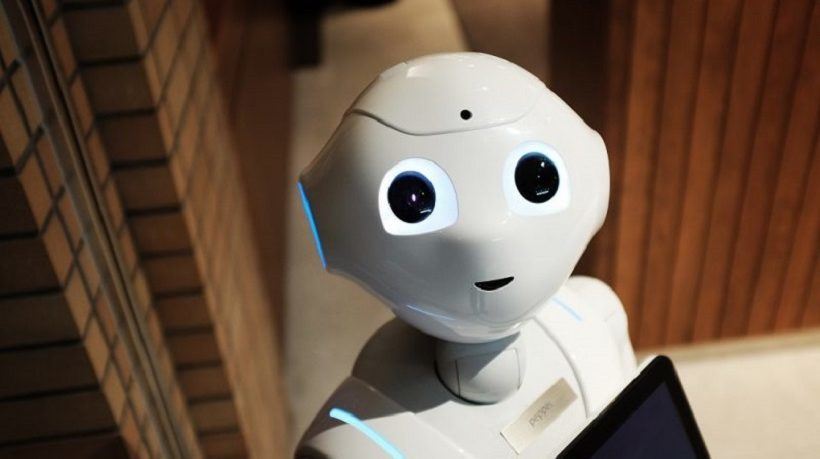What Change Has Technology Brought On Education?
The conventional classroom has transformed into a dynamic learning environment. This change is due to the advent of technology. The days of educating using blackboards and textbooks are long gone. Digital technologies and online resources are now indispensable in today's learning environment. They significantly increase stimulation and engagement. This transformation enhances the overall educational experience for students and teachers.
Students are no longer passive recipients of knowledge. With interactive whiteboards, they actively participate. They collaborate and engage in the learning process, which transforms their educational experience. Interactive tools make learning dynamic and interactive, resulting in more involvement and motivation. 81% of students believe digital devices increase their productivity and GPA [1]. 82% of respondents said digital learning resources and tech gadgets are more accessible. Because of this accessibility, they can study for longer periods of time.
Technology has significantly changed the face of education over time. It has improved accessibility, interactivity, and learning efficiency. By 2027, the market for AI education is expected to grow to $20 billion. What specific changes have technology brought about in education, and what does this mean for the future?
The Ways Technology Has Changed Education
The way students learn will continue to evolve for years when it comes to AI in education. But let’s take a look at how education technology has impacted learning to the present day:
1. Virtual Reality
In the past, sophisticated modeling and simulation tools were exclusive to tech companies. Now, these tools are more accessible. This change opens up new opportunities for various industries. Today, these tools are widely available. Instructors can now easily incorporate them into their courses. This accessibility has revolutionized how educational content is delivered.
These resources enable students to engage with their material more dynamically. They offer a visual approach. This interactive method enhances the learning experience. Teachers may now create dynamic learning environments that mirror real-world situations and occurrences.
One simulation technology revolutionizing future education is Augmented Reality (AR). Augmented Reality allows students to interact with virtual concepts. It integrates virtual elements into the actual environment, enhancing learning experiences. It has been shown that this facilitates their ability to take in and remember new knowledge.
2. Online Tools And Learning Content
In a traditional classroom setting, the main instructional tools were books and movies. This has altered dramatically with the increasing availability of mobile apps in education. 86% of eLearning graduates [1] believe the value they received outweighed the cost of their courses, making them a wise investment.
Knowledge is now accessible to everyone. This is due to blogs, online courses, and digital education platforms. This makes learning easier for everyone, regardless of age, location, or financial status.
3. Personalization And Adaptability
Gen Z and millennials expect personalized products and services. Younger students share these expectations in education. They desire tailored learning materials. This aligns with their preferences elsewhere.
In the past, a teacher would not have had the time to adapt a lesson plan for every individual student. Students have access to numerous digital learning materials. They can study independently, catering to their preferences. Extra time from instructors isn't necessary. They can choose the most effective learning methods.
4. Glorifying The Role Of Teachers
The increasing use of technology in the classroom is changing the role of teachers. In classrooms today, digital technologies are starting to change how instructors teach. This happens at all levels of education. Even when teachers are physically present, technology alters their role.
Students are now expected to take a more active role in their own education and to feel more ownership over it. Teachers nowadays focus more on teaching study skills and independent internet research. They emphasize learning methods rather than just imparting knowledge. This approach encourages students to use smart devices effectively. It fosters critical thinking and self-reliance in their academic pursuits.
5. Collaborative Learning
Many universities provide online classes, but group learning hasn't necessarily decreased. Students can now collaborate easily due to abundant materials. This shift to online learning doesn't mean fewer group interactions. Instead, students have more resources at their disposal.
Students perform better in group projects and courses using specialized collaboration tools. Virtual classrooms also aid in this collaboration. Active participation increases among students. They communicate ideas more effectively. This happens both inside and outside the classroom environment.
The Future Of Educational Technology: A Look Ahead
The pace of technological innovation has significantly advanced in recent years. It shows no signs of slowing down. Looking ahead, technology will remain crucial in education. It will evolve to enhance and transform learning experiences. The integration of technology into education has been gradual. It's a positive shift that's making a big difference. Instead of completely changing schools overnight, it's happening slowly. This evolution is building on what we already have. It's not a sudden change; it's a steady progression. We're refining tools and methodologies. This helps more people access information. It's also making education more accessible.
In the future, accessing educational content will change. Expect more interactive models. These will use online platforms and immersive tech; think Virtual and Augmented Reality. These advances will personalize learning experiences. They'll tailor content to individual needs and cater to different learning styles.
Additionally, there may be a move away from traditional lecture-based teaching methods. Instead, there will be a heightened focus on problem solving and collaboration. This approach focuses on enhancing students' skills for today's jobs. It stresses using knowledge in real-world situations. The goal is to prepare students effectively for modern workplaces. They learn how to apply what they know practically. This helps them thrive in real job scenarios.
Wrapping Up
In conclusion, EdTech awaits a world full of innovation, collaboration, and growth. Educators and educational technology businesses must stay ahead in this rapidly changing industry. They do this by monitoring emerging trends. Then, they adapt their approaches accordingly.
Technology is a powerful tool in education as it can change learning in many ways. It helps students collaborate and learn in new ways. Teachers find it easier to create materials. Education is entering a new era. It can happen anywhere, anytime. This is thanks to the internet and smart devices. Designers and educators have a big role. They must use tech to improve education. They need to make it effective and available to all.









